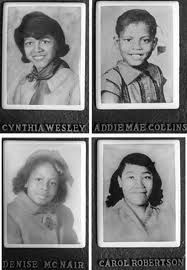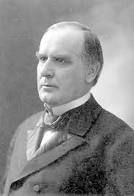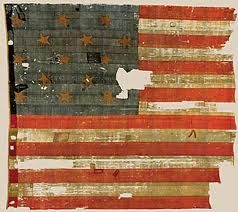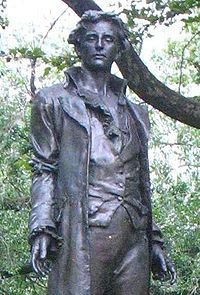Readjusting Expectations Following Pres. Obama’s DNC Speech
This Saturday morning, Up with Chris Hayes guests Victoria DeFrancesco Soto, MSNBC contributor, communications director for Latino Decisions and visiting scholar at the University of Texas-Austin; Rep. Jerrold Nadler (D-NY), representing the 8th congressional district of New York. He is currently serving his 10th term in Congress; John McWhorter, Professor of Linguistics at Columbia University, contributing editor at the New Republic and Daily News columnist; Joe Weisenthal, (@thestalwart) deputy editor at Business Insider; and Up host Chris Hayes (@Chris Hayes) look back at the Democrats’ week in Charlotte, and discuss President Obama’s convention speech and the new expectations he’s set for his campaign.
Bomber Strikes Near NATO Office in Afghanistan
KABUL, Afghanistan – A suicide bomber on foot penetrated one of the most closely defended parts of Kabul on Saturday, blowing himself up outside a carpet shop a few hundred yards from international embassies and the walls of the NATO headquarters and killing at least six Afghan civilians, including some children.
The bombing punctuated a tense holiday in commemoration of a mujahedeen commander, killed in 2001, for which security had already been increased in Kabul. Clashes between his supporters and other ethnic groups and the police in a Kabul neighborhood left cars tipped over and on fire, police guard posts burning and at least two dead, an indication that ethnic tensions remain combustible here.
The blast did not kill any foreigners or harm NATO installations. But it showed the insurgents’ ability to reach inside the central district only a few hundred yards from the United States Embassy, the presidential palace and NATO compounds.
The Taliban claimed responsibility, saying the target was a nearby Central Intelligence Agency installation.
Jesse Jackson Jr. Home After Treatment For Depression At Mayo Clinic
CHICAGO – U.S. Rep. Jesse Jackson Jr. has returned to his home in Washington after treatment for depression at Mayo Clinic, Jackson’s chief of staff in suburban Chicago said Friday.
“He’s at home in Washington convalescing with his wife and children,” Jackson aide Rick Bryant said. “Let’s hope he returns to work on Monday.”
Congress goes back into session Monday following its summer break.
Bryant said he’s not sure exactly when the Illinois congressman was discharged, and Mayo Clinic spokesman Chris Gade referred all questions to Jackson’s office. In a statement late Friday, the congressman’s wife, Chicago Alderman Sandi Jackson, said she and her husband were “thankful for the heartfelt prayers and kind thoughts from so many for our family.”
Jobs Report August 2012: US economy adds 96K jobs, rate falls to 8.1 pct.
September 7, 2012 (WASHINGTON) — U.S. employers added 96,000 jobs last month, a weak figure that could slow the momentum President Barack Obama hoped to gain from his speech Thursday night to the Democratic National Convention.
The unemployment rate fell to 8.1 percent from 8.3 percent in July. But that was only because more people gave up looking for jobs. People who are out of work are counted as unemployed only if they’re looking for a job.
The government also said Friday that 41,000 fewer jobs were created in July and June than first estimated. The economy has added just 139,000 jobs a month since the start of the year, below 2011’s average of 153,000.
Cash-short governments were a key reason the job market was weaker in June and July than first estimated. Federal, state and local governments cut 39,000 jobs in those months – above the earlier estimate of 18,000. In previous recoveries, governments have typically added jobs, not shed them.
Friday’s report was discouraging throughout. Hourly pay fell, manufacturers cut the most jobs in two years and the number of people in the work force dropped to its lowest level in 31 years.
The building would take nearly a century to complete, as architects came and went, the British set fire to it and it was called into use during the Civil War. Today, the Capitol building, with its famous cast-iron dome and important collection of American art, is part of the Capitol Complex, which includes six Congressional office buildings and three Library of Congress buildings, all developed in the 19th and 20th centuries.

 On September 25, 1789, the first Congress of the United States adopted 12 amendments to the U.S. Constitution–the Bill of Rights–and sent them to the states for ratification. Ten of these amendments were ratified in 1791. In November 1789, North Carolina became the 12th state to ratify the U.S. Constitution. Rhode Island, which opposed federal control of currency and was critical of compromise on the issue of slavery, resisted ratifying the Constitution until the U.S. government threatened to sever commercial relations with the state. On May 29, 1790, Rhode Island voted by two votes to ratify the document, and the last of the original 13 colonies joined the United States. Today, the U.S. Constitution is the oldest written constitution in operation in the world.
On September 25, 1789, the first Congress of the United States adopted 12 amendments to the U.S. Constitution–the Bill of Rights–and sent them to the states for ratification. Ten of these amendments were ratified in 1791. In November 1789, North Carolina became the 12th state to ratify the U.S. Constitution. Rhode Island, which opposed federal control of currency and was critical of compromise on the issue of slavery, resisted ratifying the Constitution until the U.S. government threatened to sever commercial relations with the state. On May 29, 1790, Rhode Island voted by two votes to ratify the document, and the last of the original 13 colonies joined the United States. Today, the U.S. Constitution is the oldest written constitution in operation in the world.




 The Pentagon is the headquarters of the
The Pentagon is the headquarters of the  On this day in 1776, General George Washington asks for a volunteer for an extremely dangerous mission: to gather intelligence behind enemy lines before the coming Battle of Harlem Heights. Captain Nathan Hale of the 19th Regiment of the Continental Army stepped forward and subsequently become one of the first known American spies of the Revolutionary War.
On this day in 1776, General George Washington asks for a volunteer for an extremely dangerous mission: to gather intelligence behind enemy lines before the coming Battle of Harlem Heights. Captain Nathan Hale of the 19th Regiment of the Continental Army stepped forward and subsequently become one of the first known American spies of the Revolutionary War. On this day in 1776, the Continental Congress formally declares the name of the new nation to be the “United States” of America. This replaced the term “United Colonies,” which had been in general use.
On this day in 1776, the Continental Congress formally declares the name of the new nation to be the “United States” of America. This replaced the term “United Colonies,” which had been in general use.